The right winter running clothes make a big difference. So how do you choose the right running clothes for winter running? It should not only be as warm and comfortable as possible. It must be warm, but most important is that it helps your body transport sweat efficiently, so the wet sweat doesn’t stay on the body and cool it down.
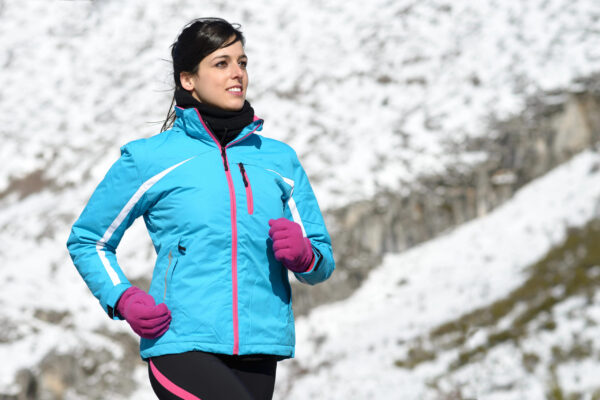
Running Clothes For The Best Comfort
When the weather gets colder, the roads are slick, and the darkness settles like a heavy cool blanket over the town, it can often be difficult to find the motivation to do your running training. So how do we even get out into the cold and dark to run? A good place to start is, of course, with the right equipment – that is, running gear that can keep you dry and warm regardless of winter’s other realities.
As you know We can’t do much about the darkness, nor can we turn up the temperature like a thermostat. But we can make your runs a whole lot better with some great running gear and make sure you can stay warm.
What Is The 3-Layer Principle And Why Should You Use It?
For us to function optimally and feel comfortable, the body must be in heat balance. This means that the body’s heat loss and heat production match. At rest, the body will try to maintain a temperature of around 37 degrees.
During physical work, however, it is an advantage to have a higher body temperature, as the processes that supply energy for muscle work function optimally at higher temperatures. The warmer a muscle is, the better the performance. During hard physical work, the body is actually in a state of fever meaning the body temperature can thus easily reach 40 degrees.
So, when you sweat, your clothes get wet, and therefore you need the right clothes/material to wick the sweat away from the body. By using the layer principle with breathable material in your outfit, you will be ready for the winter season. This post is about that.
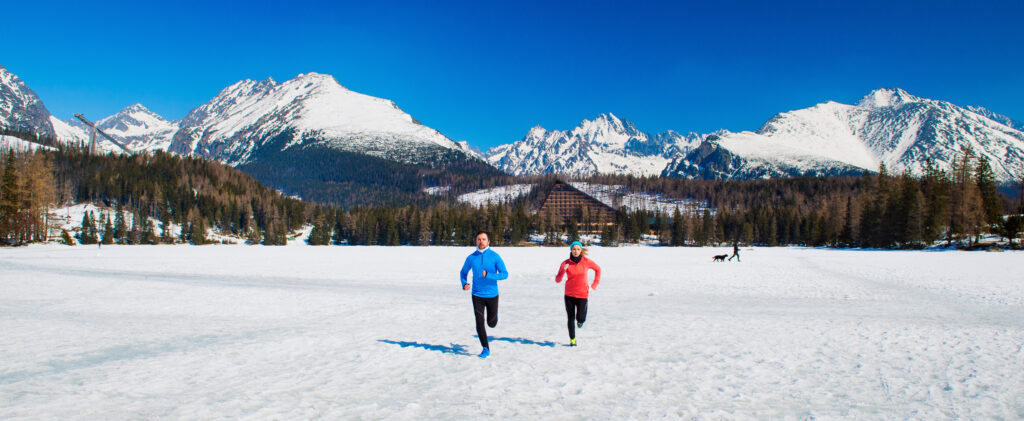
As mentioned, Winter running will often be one of the most satisfying activities. With the synthetic materials that are made today, wearing just the right outfit becomes a pleasure in itself. The run is also usually great as you run on soft, silent snow in temperatures that help keep you cool.
This type of running is often stress-free, allowing you to run at a more comfortable pace and over time build up your mileage for the spring and summer seasons. However, to fully enjoy running in the winter, it’s important to dress properly.
The general clothing guide for running also applies to the winter season, but in the cold months, there are also some special things you need to pay extra attention to. Especially in the beginning, it is easy to be fooled by the low temperatures
We can easily dress too warmly to avoid freezing. As a result, many runners wear clothes that fit the first 10 minutes of the training session. But instead, you should do the opposite. Dress to optimize comfort during the second half of the workout. Simply Dress to optimize comfort during the second half of the run. Ideally, you
should freeze a little in the beginning, even if it’s unpleasant. After just a few minutes of running, you will soon be warm again.
Running Sessions

A running session often goes through various terrains, along open and windy fields, through dense and quiet forests as well as downhill and uphill.
When weather conditions and intensity change, it’s a great benefit to use the clothes to quickly and easily adjust body temperature. Hat and gloves in various thicknesses, a vest, and a jersey with thumb holes at the cuffs are great features and accessories for this purpose.
Furthermore, a vest is also a perfect item to use for heat regulation. The vest protects the torso but also ventilates the arms and armpits. In addition, you can use the zipper to adjust the ventilation.
Another choice is to start your run wearing a hat and gloves and then, when you get warm, tuck them away in a pocket or on the inside of your tights.
The idea behind the 3-layer principle is to choose several layers, each of which can do something different and which together provide the ultimate in comfort.
A so-called neck tube is also a great garment for regulating body temperature; pull it up to cover your face and ears if it’s too cold, pull it down to protect the throat, or put it in a pocket if it gets too hot. Another good tip is to roll up the shirt or jacket sleeves at the wrists to quickly cool down.
When you run on roads and in low-light conditions, it’s extra important that you are visible in particular to others with ex. reflexes. The light from car headlamps is distributed close to the ground, so the lower the reflective details are placed on the garment the better.
By wearing reflective clothing on moving body parts, such as hands, feet, and calves, you become extra visible in the dark. Also, the visibility on your right side is extra important especially in countries with right-hand traffic (the opposite goes for left-hand traffic) In a place where the darkness rules the day, light is an essential commodity.
3-Layer Principle In Simple Form
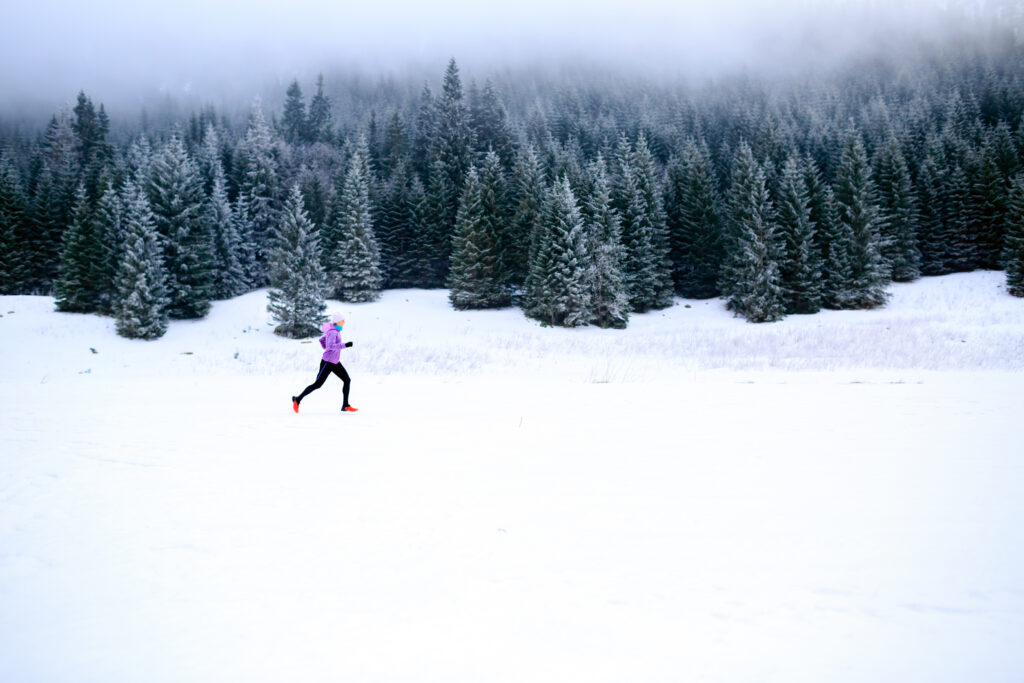
1) The inner layer or the base layer as it is also called. This layer should optimally consist of either wool or synthetic material – it depends on which activity you are preparing for. In addition, it must insulate you and transport away moisture that you produce through your sweat so that you are kept dry.
2) The second layer is the middle layer, which depending on where you are going and what you are doing, should either consist of wool, fleece, down, or a down-like fiber. The middle layer should give you the most warmth in your construction of the layers.
3) The outer layer which is called the outer layer. should, again depending on what you are doing, consist of a jacket that can withstand the elements of the weather. So it is this layer that is your guarantee that your other two layers will not get soaked and thus less able to keep you warm. The outer layer should preferably consist of a shell jacket – a hardshell – which is completely water and windproof, but can also be a softshell, which is more breathable, but not as good at resisting the rain.
Inner Layer: Get Rid Of The Sweat
The essential task of the inner layer is to transport sweat away from the body. As in other areas, the running world is also divided into two camps when it comes to the material. Should it be synthetic fabric or merino wool? Again, it’s a matter of taste, but generally the following applies:
Synthetic fabric transports moisture away from the body faster and better but can feel clammy and cold when the wind blows on you. Wool insulates even when it gets wet and it still feels warm. Wool will also not smell as quickly as synthetic materials.
The inner layer can be short-sleeved or long-sleeved, and it can be with or without a high neck. It all depends on the wind and weather and your own needs and preferences.
Most people prefer a close-fitting inner layer with short sleeves (without a neck) if you also have a long-sleeved middle layer (with a neck) on the outside. This gives a little more air and freedom of movement to the arms while keeping the upper body warm where it matters most. Again, it is important to wear clothes made of light, elastic materials with good breathability, sweat transport, and quick-drying effect.

Middle Layer: Heat With Insulating Layer
The main task of the middle layer is to provide the amount of warmth you need, which of course is individual from runner to runner.
If it’s reasonably warm, this layer doesn’t necessarily make sense, and even in cooler weather, some runners may skip it altogether and e.g. just have a merino wool sweater on the inside combined with a windproof outer layer.
For others who may be a bit cold-hardy, it is a good idea with this warm intermediate layer, which can be anything from a T-shirt to a long-sleeved one with a high collar, as needed.
As mentioned above, many prefer a tight-fitting, short-sleeved (neckless) inner layer under a slightly looser, long-sleeved mid-layer, preferably with a high neck if it’s cold and windy.
Conversely, in not-so-cold and windy weather, many people also like the slightly reversed combination with a long-sleeved inner layer (again close-fitting and without a neck) under a loose, short-sleeved middle layer (i.e. a T-shirt). Here you get warmth for the body, and the arms also get great freedom of movement, good sweat transport and breathability.
Outer Layer: Wind And Waterproof
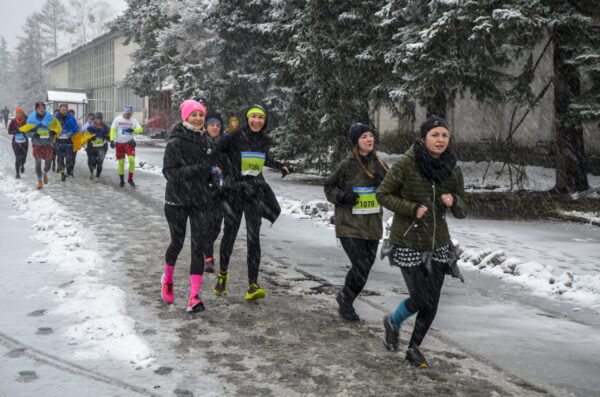
A wind and/or waterproof outer layer can be a really good idea – and in winter nothing less than absolutely indispensable, when the wind blows, the cold stings and the rain whips.
A vest provides the best ventilation and venting and protects in the areas where sweat production and the need for wind protection are greatest. Concerning running jackets, it is often a compromise between waterproofness and breathability.
If you need an ultra-breathable jacket, you cannot of course expect it to be 100 percent waterproof at the same time – and vice versa. If you find yourself sweating too much in your waterproof running jacket, the weather may even be too hot to use such a rain jacket at all.
Alternatively, you can throw it away before the sweat arrives. You can also bring your outermost layer in a rucksack/vest and have it ready if the weather forecast promises headwinds, rain, and sleet.
It is the wind and the weather – and not least your own preferences – that determine what you need. Sometimes it is most important with the windproof function, and other times the rainproof. A quick look at the weather forecast can help you choose and end up making your run much more fun, better, and more comfortable.
It pays to pay a little extra for a quality jacket with the right functions and materials. It may well be that a thin jacket for well over 150 dollars or more sounds like a lot and that you just go with the same old sweaty sauna of a rain jacket as yesterday.
But it is well spent when you are out on a trip and fends off both wind and rain while keeping you neither drenched with sweat nor freezing cold. You can get running jackets that keep the rain out while also being ultralight and breathable.
I hope you get something out of this post. If you have any questions about the topic or want to leave your review, please leave a comment below.

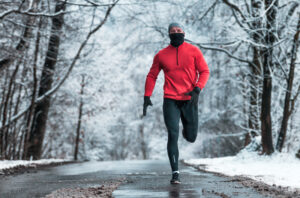




Hey Henrik! Your post on winter running clothes is super insightful. I love the breakdown of the 3-layer principle, especially the emphasis on moisture-wicking for the inner layer. Quick question: do you have any specific recommendations for brands or materials that excel in providing both warmth and effective sweat transport? Also, the tip about dressing to optimize comfort during the second half of the run is golden – definitely going to apply that next time. Keep up the fantastic work, and looking forward to more winter running tips! 🏃♀️❄️
Hey Hanna – Thank you for the comment
Specific recommendations for both warmth and sweat transport can be a dilemma but 100% merino is possible, as a synthetic product like Primaloft or a down product. Each has its unique properties and uses, where warmth to weight ratio is an important consideration.
Best Regards
Henrik
What an informative article! I am not a runner and know nothing of this topic. However, I wondered how everyone managed to stay warm. I was taken back by the comment of freezing in the beginning but later saw how it made sense. Also, I liked the tips on what the each layer should consist of. It’s a great article! Thank you for sharing!
Hi Randi – thank you for the comment. Happy that some of it gave meaning to you.
Best Regards
Henrik
Hi Henrik Jacobi! I hope you are doing well!
I found the article to be very informative. I agree that dressing appropriately for the cold weather is essential for runners who want to stay comfortable and safe.
I learned a lot from your tips and recommendations, especially the ones about layering, choosing the right fabrics. I also like the product reviews and links you provided for some of the best winter running gear available.
I’m looking forward to trying some of them out on my next run.
Best regards,
Idem
Hi Idem
Thank you for the comment and you found the article informative. I am happy that you see the intention to stay comfortable by dressing properly with the layer system.
Best Regards
Henrik
Why should our workout program stop just because the warmer months are here, it is great to know that we can still get outdoors and do what we love doing. These clothes are amazing keeping us warm while protecting us from those winter chills. Thanks for sharing these helpful insights to keep us warm during winter time.